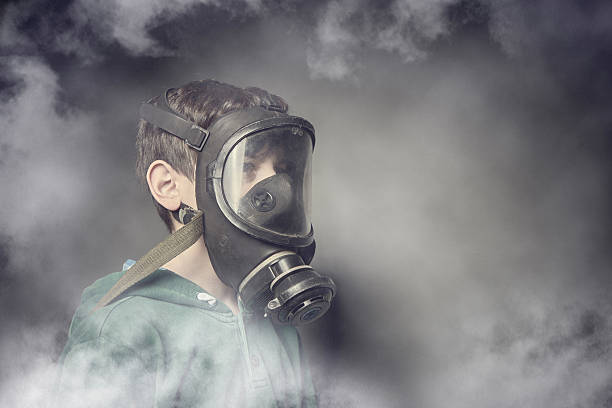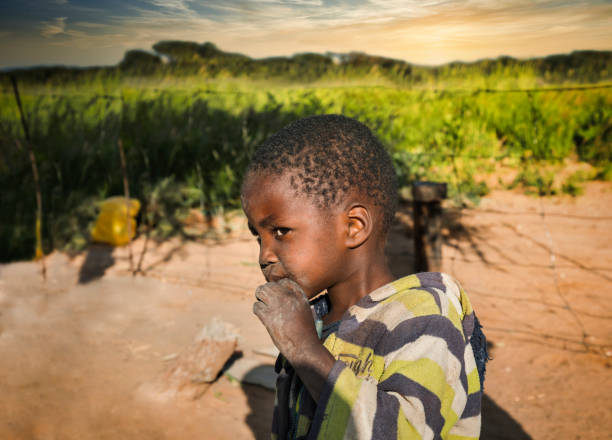A recent study suggests that air pollution contributes to 20 per cent of an annual 2.42 million infant deaths across the world occurring within the first 27 days of birth.
The study found that most of the deaths occurred in poor countries with nearly half in sub-Saharan Africa and about two-thirds of the deaths were associated with air pollution inside of people’s homes, when they burn coal or wood to cook or stay warm.
Exhaust fumes that emit from our generators at home, generators we use in our offices, and fumes from our vehicles are also major sources of air pollution contributing to the grave health risks that children face.
But a new report paints a worrisome picture of children’s health and well-being this time under an increasingly warmer world and a probable threat from incidence of wild fires.
Studies have shown that the burning of fossil fuels also releases a type of fine air pollution called PM 2.5 that can damage the heart and lungs when inhaled. Fine air pollution is especially dangerous because they are small enough to reach deep into a person’s lungs and even absorb into the blood stream. Exposure to PM 2.5 air pollution is correlated with health problems such as low birth weight and chronic respiratory diseases like asthma.
A report from the medical journal Lancet highlights the consequences of high levels of global warming and air pollution on the health of children. The report found that if emissions are not reduced to below 2 degrees Celsius by the end of the century it would trigger health problems caused by infectious diseases, worsening air pollution, rising temperatures and malnutrition.
Experts who were involved in the report say that children’s susceptibility to air pollution affects their lung development, increases chances of respiratory infections like asthmatic conditions; allergies; neurobehavioral development, and childhood cancer among other illnesses.
Part of the exposure risk that children face is simply that they spend more time outside than adults. Coupled with their physiological make up, it makes them more susceptible to fine particulate pollution. These same factors also suggest that children are more likely to suffer from the effects of extreme heat associated with climate change. Eight of the 10 hottest years on record have happened this decade alone.
The European heat waves in 2003, the experts recalled, led to the deaths of about 70,000 people. “We know that climate change had its fingerprints there and that’s concerning,” Dr. Nick Watts, the Lancet report’s executive editor, said adding that subsequent heat waves have “resulted in tens of thousands of deaths.”
“As heat waves become more severe, parents and coaches may not realise that the children are more exposed and therefore more vulnerable,” Dr. Mona Sarfaty the director of the programme on climate and health at the Centre for Climate Change Communication at George Mason University who was involved in the report according to New York Times said.
Children are especially vulnerable partly because of their physiology. “Their hearts beat faster than adults’ and their breathing rates are higher than adults,” Dr. Mona Sarfaty said.
Citing a research published in The New England Journal of Medicine after the passage of policies designed to improve air quality Dr. Sarfaty said that the findings of that research “show that the children who grew up when the air was better quality literally had more functioning lung tissue.
In addition to the emissions associated with burning fossil fuels, the report warned that unless emissions are limited future generations would be exposed to a growing source of fine-particulate pollution (PM 2.5) arising from incidence of wildfires.
As a result of temperature rises, wildfires are becoming more frequent partly because hotter temperatures dry out vegetation, making it easier to ignite. The accompanying smoke, like the smoke that comes from burning fossil fuels, has negative health effects.
According to the report, since the middle of this decade there has been a 77 per cent increase in the number of people exposed to wildfire smoke worldwide. Much of that growth has been in India and China.
The report is the third time The Lancet has weighed in on the health impacts of climate change, but the first with a focus on children. “It was our contention, both negatively, that the health costs were huge and underestimated. But also, more positively, that by putting health first in our response to climate, there were dividends for both the public and for the economy in terms of cleaner and safer cities and healthier diets,” Dr. Richard Horton, editor in chief of The Lancet, was quoted by New York Times to have said.





